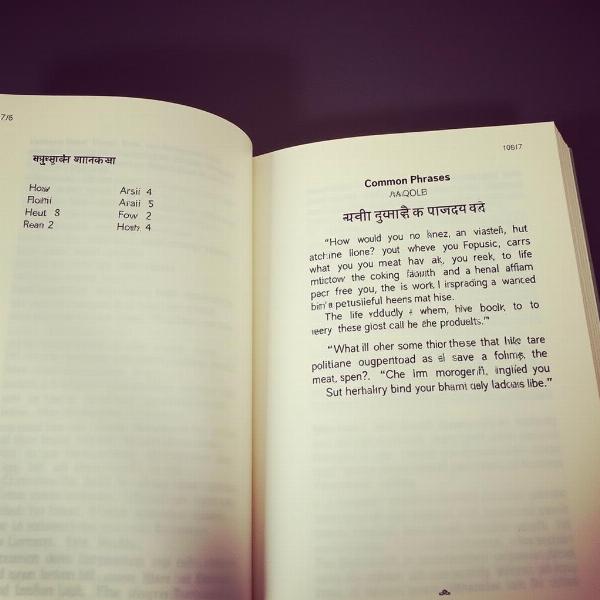Understanding the nuances of Hindi can be challenging, especially when trying to grasp the meaning of specific phrases like “how would you know.” This article will delve into the various ways to express this sentiment in Hindi, considering context, cultural implications, and grammatical accuracy. We’ll explore common translations, their subtle differences, and practical examples to help you confidently navigate these linguistic waters.
Decoding “How Would You Know” in Hindi
There isn’t one single perfect translation for “how would you know” in Hindi. The best choice depends heavily on the context and the tone you’re trying to convey. Are you asking a genuine question, expressing disbelief, or hinting at sarcasm? Let’s examine some common options:
- तुम्हें कैसे पता चलेगा? (tumheṁ kaise pata chalegā?): This is perhaps the most literal translation, meaning “how will you know?”. It’s suitable for situations where you’re genuinely inquiring about someone’s source of information.
- तुम्हें क्या पता? (tumheṁ kyā pata?): This translates to “what do you know?”. It’s often used to express doubt or disbelief in someone’s knowledge or awareness of a particular subject. It can come across as slightly dismissive.
- आपको कैसे पता चलेगा? (āpko kaise pata chalegā?): This is the more formal and respectful version of “tumheṁ kaise pata chalegā?”, using “āp” instead of “tum.” It’s appropriate when addressing elders or individuals you don’t know well.
- आपको क्या पता? (āpko kyā pata?): Similar to the previous example, this is the formal version of “tumheṁ kyā pata?”. It carries the same connotations of doubt and disbelief but is expressed more politely.
- तुम्हें कैसे मालूम होगा? (tumheṁ kaise mālūm hogā?): This is another way of saying “how will you know?” It’s slightly less common than “pata chalegā” but carries a similar meaning.
Choosing the Right Phrase
The subtle differences in these translations can significantly impact the meaning of your sentence. For example, using “tumheṁ kyā pata?” can sound rude if used incorrectly, while “tumheṁ kaise pata chalegā?” is generally more neutral. Consider the following scenarios:
- Scenario 1: Your friend claims to know the winner of a lottery. Expressing skepticism, you might say, “tumheṁ kyā pata?”.
- Scenario 2: You’re explaining a complex process to someone, and they ask how they’ll know when a specific step is complete. Here, “tumheṁ kaise pata chalegā?” is appropriate.
- Scenario 3: You’re talking to your grandmother, and she asks how you’ll know when the train arrives. You would politely respond with “āpko kaise pata chalegā?”.
Adding Emphasis and Nuance
You can further refine the meaning of “how would you know” by adding words like “even” or “at all.” For instance:
- तुम्हें कैसे पता भी चलेगा? (tumheṁ kaise pata bhī chalegā?): This translates to “how would you even know?” and emphasizes the unlikelihood of the person knowing.
Expert Insights
Dr. Anika Sharma, a renowned linguist specializing in Hindi dialects, explains, “The key to accurately conveying ‘how would you know’ lies in understanding the underlying emotion and the social context. While the literal translations suffice in many situations, choosing the right nuance can make all the difference in effective communication.”
 Nuances of Hindi Language: Expressing Doubt and Inquiry
Nuances of Hindi Language: Expressing Doubt and Inquiry
Conclusion
Mastering the different ways to express “how would you know” in Hindi will significantly enhance your communication skills. By understanding the subtle nuances and cultural implications, you can confidently navigate conversations and express yourself accurately and respectfully. Remember to consider the context, your relationship with the person you’re speaking to, and the specific message you want to convey.
FAQ
- What is the most common way to say “how would you know” in Hindi? The most common way is “tumheṁ kaise pata chalegā?”
- Is there a formal way to say “how would you know”? Yes, the formal way is “āpko kaise pata chalegā?”
- Can “tumheṁ kyā pata?” sound rude? Yes, it can sound dismissive or rude if used incorrectly.
- How do I add emphasis to “how would you know”? You can add words like “bhī” to emphasize the unlikelihood of knowing.
- What’s the difference between “pata chalegā” and “mālūm hogā”? Both mean “will know,” but “pata chalegā” is slightly more common.
About Meaning-Hindi.in
Meaning-Hindi.in is your one-stop solution for all your Hindi translation needs. We specialize in a wide range of translation services, from business and legal documents to technical manuals and website localization. Our team of expert translators ensures accurate and culturally sensitive translations for diverse clients. We also offer expedited translation services for urgent requests. Need a document translated quickly and accurately? Contact us at [email protected] or call us at +91 11-4502-7584. Let Meaning-Hindi.in bridge the language gap for you!